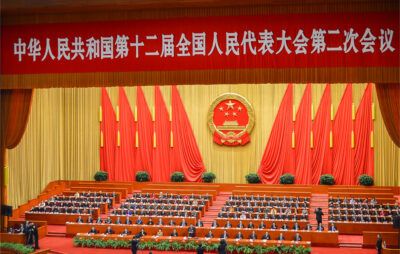How China Is Driving Federal Reserve Policy
During the Cold War, national security analysts spoke knowingly about the art of “Kremlinology.” This was a technique for understanding Soviet power relations and policy changes taking place inside the leadership compound in the Kremlin.
The Soviet Union was completely opaque. One-time leaders could be demoted and new leaders advanced without any public acknowledgement. One technique for gleaning information was to look at photographs of Soviet leaders assembled on top of Lenin’s Tomb in Red Square on important occasions. Such photographs were among the few glimpses of the leadership available to the public. Analysts were careful to note the proximity of each figure in the photo to a supreme leader such as Leonid Brezhnev. A Politburo member who was adjacent to Brezhnev one year but two places away the next had clearly been demoted.
Unfortunately our access to Federal Reserve monetary policy is not much improved over those Cold War techniques. The understanding of Fed policy is left to careful scrutiny of official speeches, reading between the lines of various statements, and using software to detect subtle shifts in wording such as “prepared to take” turning into “will provide” as the standard for further ease.
Even these resources are of limited use since regional Federal Reserve Bank presidents often contradict each other and the Fed Board often hides its true motivations. They will tell the public what they are doing without really saying why. The situation is not much better in Europe where national central bank heads sometimes quarrel with the European Central Bank.
Markets are now approaching one of the most momentous two-week stretches of central bank actions and economic data in recent memory. On August 31, senior officials from the Fed, the European Central Bank, and other central banks along with prominent economists and top financial journalists will gather near Jackson Hole, Wy. for their annual central bank symposium. Less than a week later, on September 6, the ECB Governing Council will announce its monthly decision with respect to key interest rates for the euro area. The following day the United States. will announce its monthly employment report. Finally, on September 13, the Federal Open Market Committee will issue its statement with regard to key U.S. interest rates followed by a press conference by Chairman Bernanke.
Importantly, one driver of policymaking to come in this two-week stretch is happening not in the United States or Europe but half-a-world away in China. After hitting a 19-year high of 6.3 yuan to the dollar in late April, 2012, the Chinese yuan has weakened trading recently at about 6.4 yuan to the dollar, a 1.5 percent decline in the past three months. While this decline may seem slight, it represents a reversal of four-years of pressure by the United States to force the Chinese to appreciate the yuan.
The 17 percent upward revaluation of the yuan from August, 2007 to April, 2012 was material, but still far short of the 30 percent or more revaluation sought by the United States. Moreover, even this modest progress required the full force of Fed “QE” or quantitative easing to achieve.
The first QE program lasted from November, 2008 through June, 2010. The second, QE2, lasted from November, 2010 through June, 2011. Both QE programs put enormous pressure on the Chinese either to revalue their currency or face internal inflation as they printed yuan to soak up the easy money dollars finding their way to China.
The fact that the Chinese have now allowed the yuan to devalue against the dollar is a powerful prompt to the Fed to launch a new round of QE to once again force the Chinese to make an unpleasant choice—more upward revaluation of the yuan or more inflation in China.
Of course, the Chinese yuan is not the only driver of Fed or ECB policy. The ECB has ample reason to create ease through rate cuts based on economic weakness on the European periphery regardless of the yuan exchange rate. The Fed will be responding to weak employment and weak economic growth in the United States.
The Fed will never make explicit reference to the dollar/yuan exchange rate because exchange rate policy is the exclusive domain of the U.S. Treasury. However, like the good Kremlinologist, one can use inference and seemingly extraneous data to see what is going on behind the scenes. A weaker dollar to promote exports is a paramount goal of U.S. economic policy. The Fed’s relentless money printing, otherwise known as QE, is the key to forcing China to revalue the yuan despite their reluctance to do so.
So look for the following sequence of events. On August 31, the Fed will give strong indications that more quantitative easing should be expected if economic conditions do not show substantial improvement. On September 6, expect the European Central Bank to lower its main lending rate by 25 basis points to 0.50 percent. Then on September 7 look for an employment report weaker than consensus estimates due partly to quirks in seasonal adjustments. This will give the Fed economic justification and political cover for the start of a new quantitative easing program on September 13. This double-dose of ECB and Fed ease should give stock markets a lift through the fall at least until the twin dangers of the fiscal cliff and war with Iran stare investors in the face later this year.
By James Rickards
Read the original article here











